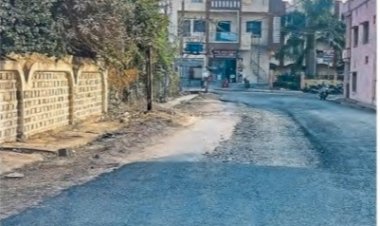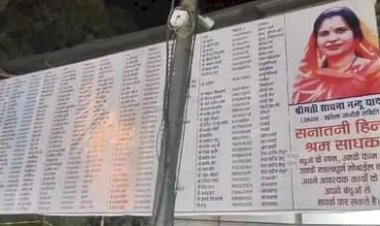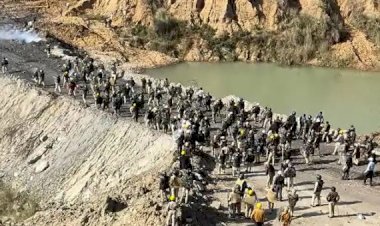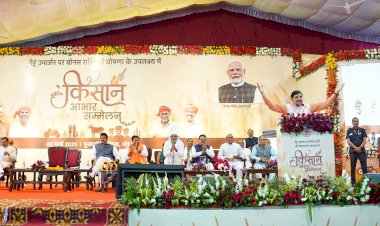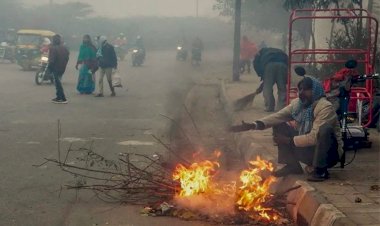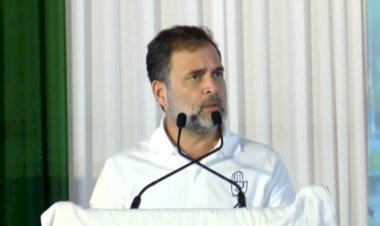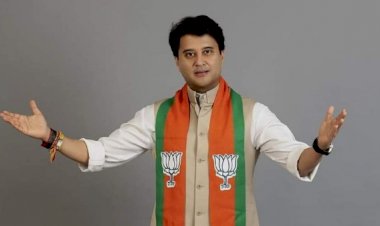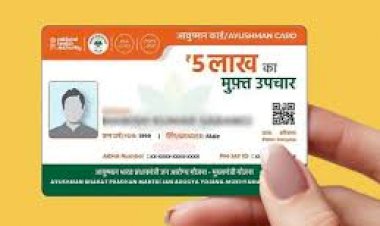गांवों तक पहुंची महामारी, पंचायतें कहां हैं?
प्रत्येक राज्य को लोगों को जागृत करना होगा कि ‘हमारी पंचायत हमारा भविष्य हैं।’
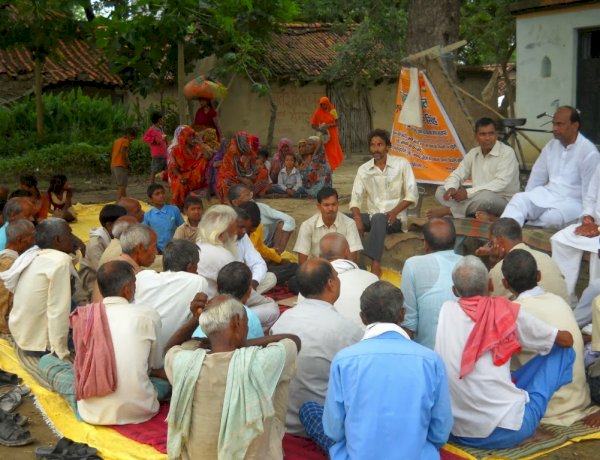
यह बहुत दुखद है कि कोरोना वायरस से उपजी महामारी के कारण भारत के गांवों में लाखों लोगों को बहुत अधिक कष्ट सहने पड़ रहे हैं। यह महामारी फैलती जा रही है और बहुत से लोगों की जान जा रही है। इस महामारी से करोड़ों लोगों की रोजी रोटी पर जो असर पड़ा है, उसे लेकर ना केवल सत्ता में बैठे लोगों बल्कि देश के प्रत्येक नागरिक को सचेत हो जाना चाहिए।
एक जरूरी बात यह है कि अगर आज पूरे देश में संविधान के मुताबिक पंचायती राज व्यवस्था लागू होती है तो हम वर्तमान संकट का सामना अलग तरीके से कर सकते थे। हम लोगों की जान और उनकी रोजी रोटी दोनों बचा सकते थे। इस संदर्भ में केरल एक रोल मॉडल है। केरल के लगभग तीस लाख लोग देश के बाहर काम करते हैं और वे लगातार आते-जाते रहते हैं। उनके साथ हजारों पर्यटक भी केरल आते रहते हैं। इस लिहाज से केरल में कोरोना वायरस के फैलने का खतरा बहुत अधिक था। लेकिन आखिर केरल ने किस तरह से कोरोना पर नियंत्रण किया? सिर्फ अपनी मजबूत पंचायती राज व्यवस्था से।
चलिए, मैं जरा भारत में पंचायती राज व्यवस्था का इतिहास आपको बताता हूं। जब 24 अप्रैल, 1993 को पंचायतों और 1 जून 1993 को नगर पालिकाओं को यह शक्ति दी गई कि जरूरत पड़ने पर वे स्वशासन निकायों की तरह काम कर सकें, तो यह एक मौन क्रांति की शुरुआत थी। इससे भी ज्यादा यह ऐतिहासिक था। माहात्मा गांधी और ‘जनता को शक्ति’ के विचार की वकालत करने वालों के सपने संविधान लागू होने के 43 साल बाद पूरे हुए।
शुरुआती सालों में सभी राज्यों ने, चाहे वहां किसी भी पार्टी की सरकार हो, ने सत्ता का केंद्रीकरण कर संवैधानिक प्रवाधानों को धता बताया। राज्य, चुनाव कराने के लिए बिल्कुल भी उत्साहित नहीं थे। यहां यह बताया जा सकता है कि संविधान के 73वें संशोधन के तहत पंचायत चुनाव कराने वाला मध्य प्रदेश पहला राज्य था। राज्य में 1994 में पंचायत चुनाव हुए थे। तब दिग्विजय सिंह मुख्यमंत्री थे और पंचायती राज व्यवस्था के हिमायती के तौर पर मिली लोकप्रियता ने उन्हें दो कार्यकाल दिए।
यह भी याद किया जा सकता है कि बहुत से राज्यों द्वारा अपनाए गए संविधान विरोधी रुख का सिविल सोसाइटी समूहों ने विरोध किया। इन समूहों ने जन याचिकाएं दायर कीं और न्यायपालिका ने बहुत से स्तरों पर प्रभावी तरीके से हस्तक्षेप किया।
भारत सरकार 24 अप्रैल को राष्ट्रीय पंचायती राज दिवस के रूप में घोषित कर चुकी है। इस साल पंचायती राज दिवस पर प्रधानमंत्री नरेंद्र मोदी ने एकीकृत ई-ग्राम स्वराज पोर्टल और मोबाइल एप्लिकेशन को लॉन्च किया। इसका लक्ष्य ग्राम पंचायतों को एक सिंगल इंटरफेस से लैस करना है ताकि ग्राम पंचायत विकास कार्यक्रम को तैयार और लागू किया जा सके। यह आगे बढ़ने के लिए वास्तव में एक बड़ा कदम है।
लेकिन एक मूलभूत सवाल भी है। आज पंचायत हैं कहां? क्या वे संघीय सरकार के ‘थर्ड टायर’ के रूप में काम कर रही हैं? हमारे पास करीब 2,40,000 ग्राम पंचायतें और 30 लाख से अधिक चुने गए पंचायती सदस्य हैं। जैसा कि भारत के संविधान में उल्लिखित है, पंचायतों को 29 विषय दिए गए हैं। क्या भारत के सभी राज्यों ने अपनी-अपनी स्थानीय सरकारों को उनकी उचित शक्तियां सौंप दी हैं? क्या आज 27 साल बाद हम यह कह सकते हैं कि क्या सभी 29 विषय ग्राम पंचायतों के अधिकार क्षेत्र में आते हैं?
Click फीलगुड से नहीं जाएगा कोरोना
क्या इन पंचायतों के पास अध्यक्षों, चुने गए प्रतिनिधियों और अधिकारियों के काम करने के लिए संसाधन सपन्न इमारते हैं? इतना ही नहीं कितनी पंचायतों के पास आधुनिक कंप्यूटरों और इलेक्टॉनिक्स से सुसज्जित कार्यालय हैं? बहुत कम राज्यों को छोड़कर और किसी भी राज्य ने पंचयातों के लिए इस तरह का राजनीतिक माहौल नहीं बनाया कि वे अपनी स्वतंत्रता के साथ काम कर सकें। क्या चुने गए पंचायती सदस्यों को नियमित तौर पर ट्रेनिंग दी जाती है?
हमारे पास लोकतंत्र को और अधिक मजबूत करने के लिए ग्राम सभा और वार्ड सभा के रूप में संवैधानिक प्रावधान मौजूद हैं। इन निकायों को स्थानीय विकास और ग्रामीण एवं शहरी क्षेत्र में खर्च पर निगरानी रखने के लिए विशेष शक्तियां मिली हुई हैं। क्या ये निकाय अच्छे से काम कर रहे हैं?
Click इस अंधेरे वक्त में
हाल ही में गांव के स्तर पर डिजिटल वित्तीय लेन देन को प्रमोट करने के लिए स्कीम बनाई गई हैं ताकि गांव में रहने वाले लोग नगदी और कागज रहित प्रक्रिया का फायदा उठा सकें। आदिवासी इलाकों में वित्तीय समावेश प्रोजेक्ट, कामगार महिलाओं के लिए हॉस्टल सुविधा और जियो-इनफॉर्मेटिक ब्लॉक पंचायत जैसी स्कीमें सच में प्रगतिशील हैं। लेकिन क्या ये स्कीमें समूचे देश में प्रभावी ढंग से काम कर रही हैं?
इस संदर्भ में, इस साल पंचायती राज दिवस पर प्रधानमंत्री द्वारा किए गए वादे का क्या होगा? गांव में रहने वाले लोग एकीकृत ग्राम स्वराज पोर्टल और मोबाइल एप तक किस तरह पहुंचेंगे।
विचार करने वाली बात यह है कि केंद्र सरकार के पास संविधान के 73वें संशोधन को व्यवहार में लाने लायक राजनीतिक इच्छाशक्ति जरूर होनी चाहिए। अगर ऐसा नहीं होता तो केंद्र के स्तर पर बनाई गई योजनाएं लोगों तक नहीं पहुंचेंगी। आज भी राजीव गांधी के उस कथन की याद आती है, “गांव के लोगों के लिए निर्धारित किए गए एक रुपये में से उनके पास सिर्फ 15 पैसे पहुंचते हैं।”
यह बहुत जरूरी है कि केंद्र सरकार द्वारा निर्धारित फंड राज्य सरकारों तक पहुंचे और हर साल बजट के तहत राज्य सरकारें फंड को प्रत्येक ग्राम पंचायत तक पहुंचाएं। इसके लिए सबसे अच्छा उदाहरण केरल है। राज्य सरकारों के वित्त विभाग और पंचायतों के बीच स्थित बिचौलिए पूरी तरह से अप्रासंगिक हो जाएंगे।
Click साबित कीजिए कि यह सिर्फ बालकनी वालों की सरकार नहीं है...
गंभीर सामाजिक और राजनीतिक चुनौतियों को मद्देनजर रखते हुए- सामाजिक विषमता, जाति व्यवस्था, पितृसत्ता, सामंती ढांचा, अशिक्षा, असमान विकास- जिसके भीतर इसे काम करना है, नए पंचायती राज ने स्थानीय शासन में एक नया अध्याय खोला है। लेकिन क्या ऐसा हुआ है? नहीं। सिर्फ कुछ राज्यों को छोड़कर ज्यादातर राज्यों में कोई जिला स्तर सरकार, ब्लॉक पंचायत या ग्राम पंचायत नहीं है। जिला स्तर पर हमारे पास कलेक्टर राज है और नीचे जाने पर अधिकारी शासन को प्रशासनिक ढांचे के साथ संपुटित करके हर पहलू को नियंत्रित करते हैं।
प्रत्येक राज्य को लोगों को जागृत करना होगा कि ‘हमारी पंचायत हमारा भविष्य हैं।’ यह जल्द से जल्द होना चाहिए। (मूल अंग्रेजी में लिखे गए आलेख हिन्दी में अनुदित)
COVID-19 hits our Villages: Where are the Panchayats?
It is a sad story that in India, millions of people in our villages are undergoing enormous suffering after the outbreak of the coronavirus pandemic. The acute health problem is spreading and many are losing their lives. Moreover, the impact of COVID-19 on the livelihood of crores of our people is a wakeup call for all those in the seat of power as well as for every citizen of this country.
The critical issue is that if only our Panchayati raj system were in place, active and dynamic as mandated by the Constitution of India in all the States and Union Territories, we could have handled the present crisis in a different way by saving people’s life and livelihood. The role model for success in this context is Kerala. How did this state which was susceptible to the corona virus as nearly 30 lakhs Keralites live, work, study outside India and in thousands, arrive and depart through the four international airports along with the tourists who consider Kerala as “God’s Own Country”, combat the coronavirus? Only because of Strong Panchayats in the state.
Let me go back to the Panchayats in India today. When on April 24, 1993 Panchayats and on 1 June 1993 the Municipalities were endowed “with such powers and authority as may be necessary to enable them to function as institutions of self-government”, it was the beginning of a silent revolution. Moreover, it was historic. The dream of Mahatma Gandhi and all those advocated “power to the people” came true after 43 years of India becoming the Republic.
In the initial years, almost all the states irrespective of the party in power, had defied the constitutional provision with all the power at their command. The states were not enthusiastic to hold the elections at all. It may be mentioned here that the first state to hold the panchayat elections according to the provisions of the 73rd Constitution Amendment was Madhya Pradesh (1994).Then, Digvijay Singh ji was the Chief Minister and he held two terms because of his popularity as a champion of Panchayati raj.
It may be recalled here that the civil society organizations took the initiative to fight the anti-constitutional approach of several states by filing public interest litigations (PILs) and the judiciary at different levels effectively intervened.
The Government of India has declared April 24 as the National Panchayati Raj Day. This year on the Panchayati Raj Day, Prime Minister Narendra Modi launched a unified e-Gram Swaraj portal and mobile app as part of the new initiative aimed at providing Gram Panchayats with a single interface to prepare and implement gram panchayat development plan. This is indeed a big step forward.
But there is a basic question. Where are the Panchayats today? Are they functioning as the third tier of the federal government? We have nearly 2,40,000 village panchayats and more than 30 lakhs elected panchayat members. As mentioned in the Constitution of India, 29 subjects are allocated to the Panchayats. Have all the states in India devolved powers to the local governments? Today after 27 years, can we say that all these subjects come under the purview of panchayats in the respective states?
Do these panchayats have well equipped buildings for the president, elected members, officials to function from? Moreover how many panchayats have the modern offices equipped with latest computers and electronic systems? Except very few states, no state has created a political ethos for Panchayats to function as “institutions of self- government”. Are the elected panchayat members getting regular training and exposure visits?
We have a unique distinction of creating a constitutional forum for direct democracy - the Gram Sabha and Ward Sabha - with special powers for overseeing the local development and expenditure in rural and urban areas. Are they working in letter and spirit?
Of late, schemes have been envisaged to promote digital financial transactions at the village level to promote the benefits of cashless and paperless processes to benefit villagers in rural parts of the country. Schemes such as financial inclusion projects in tribal areas, working women hostels, geo-informatic block panchayats are of courseprogressive, but are they effectively working across the length and breadth of the nation?
In this context, what will happen to the promise made by the Prime Minister on this year’s National Panchayati Raj Day? How will the villagers in India access the unified e-Gram Swaraj portal and mobile app?
The critical issue is that the Union Government must have the political will to bring into operation, the Constitution (Seventy-third Amendment) Act 1992. The centrally sponsored schemes will not reach the people. Even today one is reminded of what Rajiv Gandhi said: “out of one rupee allocated for the people in the villages, 15 paisa reaches them.” It is fundamental that the funds from Union government must reach the state governments and each state government must allocate every year, through the annual budget presented in the Assembly, funds for each and every panchayats. The best example for this is Kerala. The middlemen between state capital/finance department and the panchayats will become irrelevant.
Given the severe social and political constraints – social inequality, caste system, patriarchy, feudal setting, illiteracy, uneven developments – within which it had to function, the New Panchayati Raj has opened a new chapter in local governance, but has it happened? No. Except in very few States, there is no District Government, Block Panchayats or Gram Panchayats. At the district level we have Collector raj and down below the officials control all aspects by encapsulating governance into administrative structure.
Every State must organize a campaign to conscientize the people:“Our Panchayats, Our Future”, it must happen sooner than later.


















